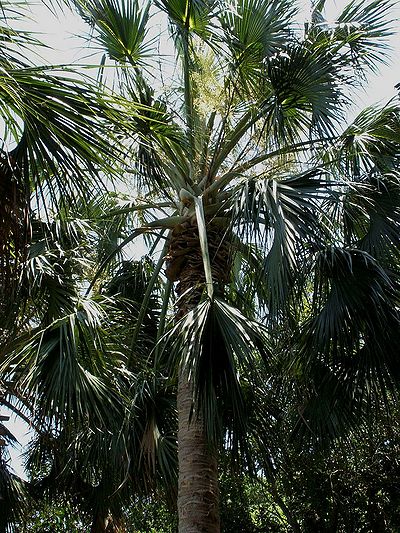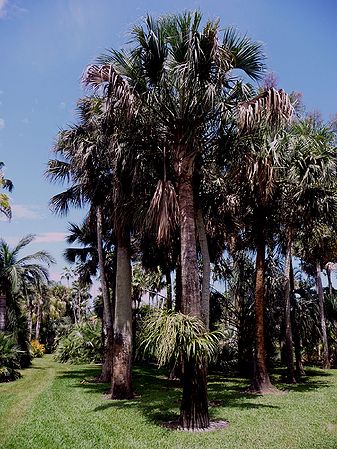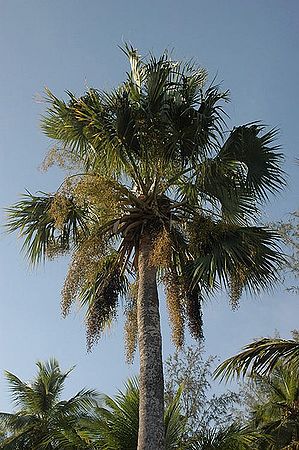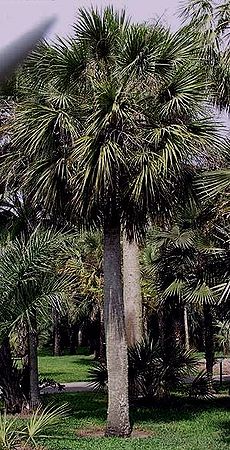Sabal domingensis
Hispaniola palmetto, Hispaniola palm, Dominican palm
| Sabal (SAH-bahl) domingensis (doh-mihn-JEN-sis) | |||||||
|---|---|---|---|---|---|---|---|
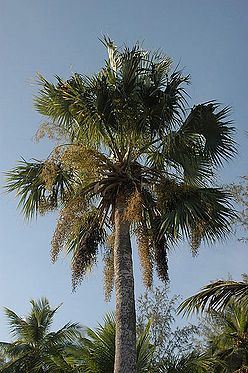 | |||||||
| Scientific Classification | |||||||
| |||||||
| Synonyms | |||||||
|
| |||||||
| Native Continent | |||||||
|
| |||||||
| Morphology | |||||||
| |||||||
| Culture | |||||||
|
| |||||||
| Survivability index | |||||||
|
| |||||||
| Common names | |||||||
|
| |||||||
Contents
Habitat and Distribution
Sabal domingensis, the Hispaniola palmetto is a species of palm which is native to Hispaniola and Cuba.
Description
Sabal domingensis is a fan palm, and costapalmate, with solitary, very stout stems, which grows up to 16 metres (53 ft.) tall and 60 centimetres (24 in.) in diameter. Plants have 20–30 leaves, each with about 90 leaflets. The inflorescences, which are branched, arching and at least as long as the leaves, bear pear-shaped, black fruit. The fruit are 1–1.4 centimetres (0.4–0.6 in.) in diameter; fruit size and shape are the main characteristics by which this species differs from Sabal causiarum. Editing by edric.
Culture
Hispaniola palm is easy to grow on most soils except those that are continually soggy. It has a preference for light sandy soils. Prone to Potassium deficiency in SoCal. Fertilize twice yearly in spring and summer for faster growth. Light: Thrives in bright, sunny, exposed areas. Moisture: Drought tolerant. Hardiness: USDA Zones, 9 - 10. May also be hardy in some parts of Zone 8. many young palms have weathered 20º F. (-6.6º C.) with only minor leaf damage - and seem to be mostly resistant to the fungus diseases that strike after a hard freeze. Propagation: This palm is easy to propagate from seed. Germination time is 2 to 6 months.
Comments and Curiosities
This is a tillering palm, it exhibits saxophone style root growth (it has a heel), keep top third of heel above soil elevation!
Uses: The leaves are used for thatch and to weave a variety of items including hats, baskets and mats.
Sabal domingensis is known as the "Hispaniola palmetto", "Hispaniola palm", or "Dominican palm"[citation needed] palma cana in the Dominican Republic and latanier-chapeau in Haiti. Sabal domingensis is found from northwest Haiti to the central Dominican Republic, and is also present in Cuba. It is usually found in secondary vegetation between 100 and 1,000 metres (328 and 3,281 ft) above sea level.
- IMAGE GALLERY
External Links
- Glossary of Palm Terms
- MODERN BOTANICAL LATIN
- "Just To Be Clear"
- http://www.palmdoctor.com/Palm_0f_The_Month/Sabal_domingensis.htm
- http://www.floridata.com/ref/s/saba_dom.cfm
- http://southeastgarden.com/cuba.html
- Sabal domingensis in Cuba, Dr. Scott Zona
- THE SAXOPHONE STYLE ROOT GROWTH (HEEL)
References
Phonetic spelling of Latin names by edric.
Special thanks to Geoff Stein, (Palmbob) for his hundreds of photos.
Special thanks to Palmweb.org, Dr. John Dransfield, Dr. Bill Baker & team, for their volumes of information and photos.
Glossary of Palm Terms; Based on the glossary in Dransfield, J., N.W. Uhl, C.B. Asmussen-Lange, W.J. Baker, M.M. Harley & C.E. Lewis. 2008. Genera Palmarum - Evolution and Classification of the Palms. Royal Botanic Gardens, Kew. All images copyright of the artists and photographers (see images for credits).
Many Special Thanks to Ed Vaile for his long hours of tireless editing and numerous contributions.

